By Alex Trukan
Italian teams have always been known for having a high tactical proficiency. The ‘defending arts’ have been their major strength and area of focus. Despite many different formations utilised by their teams, it is the 5-3-2 shape that gained popularity in recent years. It is not, however the formation that makes them so good at defending but the way they play within it. Defending can be classed as relatively straightforward and simple (not easy!), but not many teams are able of executing the basic principles consistently and with quality. The defending principles relate to being compact as a team, applying pressure on the ball, and providing support around the ball as well as cover away from it. This article focuses on simple defending strategies within a 5-3-2 formation.
When the ball is on the opposition half, the analysed defending team chooses to apply pressure from around the halfway line. This restricts available spaces behind them and helps them to stay more compact. As it can be seen below, two strikers slide across to screen any passes into midfield as well as apply pressure on the ball if it is wide on the opposition half. The role of the three midfielders is to mark opposition players around the middle third and screen passes into the strikers. The back five cover from the back – three central defenders stay within the width of the penalty box while wing backs apply pressure on the opposition wingers.
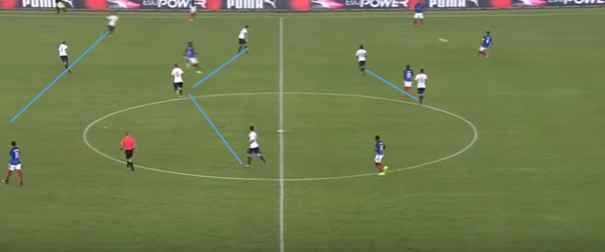
The priority is to protect and restrict spaces in central areas. This is why, whoever presses the ball forces the opponent wide. Other players around the ball support centrally and prevent any forward passes. Playing with five at the back provides excellent opportunity to press high in wide areas without losing central compactness at the back line.
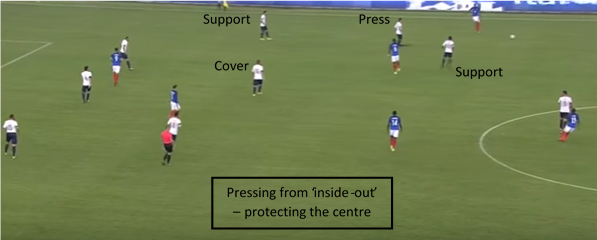
As the ball is switched across, the team has to slide across to the other side. This is the moment when a lot of the teams make mistakes by not applying support around the ball quickly enough. The key is to retain the same, short distances between the players and stay compact as a team – press together, move together, arrive together.
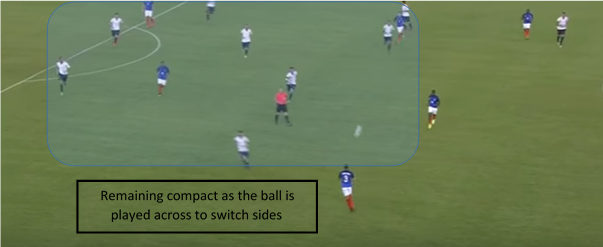
An important point for three central midfielders is to stay within central areas and do not get caught up too wide. This will ensure that prioritised zones are protected so that the wingback responsibilities are not doubled up. Having five players at the back provides enough defensive ‘width’ to apply pressure in wide areas as the ball is switched across.
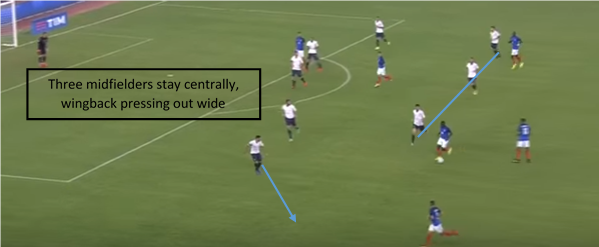
Opposition players will often make forward runs from between the lines and try to penetrate in behind. A crucial aspect of defending is tracking runners. This is another moment when a lot of the teams lose their shape. In this situation the same defending principles apply – support around the ball has to remain goal sided even when the opposition player makes a forward run. The ‘Third’ defender has important role to cover the supporting defender that tracks the runner as it is likely he will be out of position.
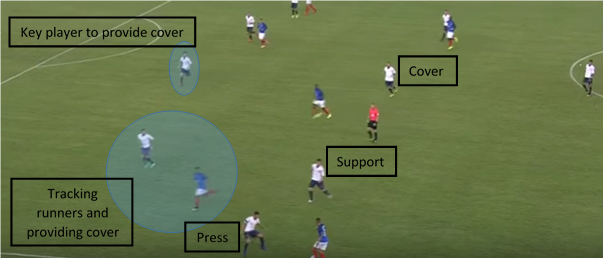
As it can be seen below, a defender tracking the run stays in front of him and prevents the attacker from getting on the ball in the space. The first defender applies pressure on the ball and prevents turning, while the ‘third’ covering defender comes across to close the gap and support.
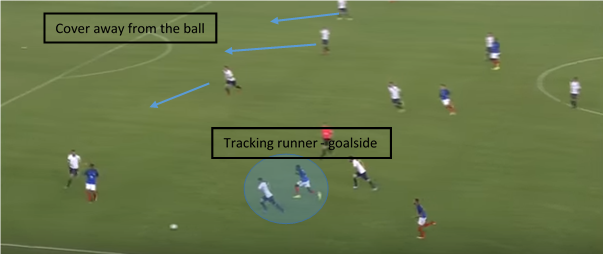
The teams that concede the least amount of goals apply simple defending principles but with quality and consistency. Whenever out of possession, all the players on the pitch have a role to either press, support or cover. It is the formation and specific defending strategy (when and where the teams want to win the ball) that provides the framework for effective defending.
By Alex Trukan, Development Coach, Nottingham Forest
@AlexTrukan


